It’s not often that a group of alumni discovers a decades-old pot of money hiding in plain sight. The amount, which had accumulated with interest for 75 years, was staggering: more than half a million dollars.
The windfall was sitting in an all-but-forgotten fund created in the 1940s to buy a house for Sigma Phi Epsilon fraternity. The dream was dashed, but the fund remained — even after the fraternity’s Wake Forest chapter closed in 2017. When SigEp alumni found the money, they repurposed the fund and started a scholarship fund.
In the last five years, the fund has awarded more than $225,000 – in amounts ranging from $2,000 to $20,000 – to 18 students, including six relatives of SigEp members.
“This was a way — since a house did not seem to be in the future — to put our feelings about the fraternity into our feelings for Wake Forest.”
Bob Williams (’58, P ’88, ’91, ’94), chair of the trustees of the SigEp North Carolina Zeta Alumni Association which awards the scholarship, calls it “a gift” that students can use for anything – to pay for summer school, study abroad, travel, books and computers or to pay off student loans.
“This was a way — since a house did not seem to be in the future — to put our feelings about the fraternity into our feelings for Wake Forest,” he says. “We know the scholarship is making a difference.”
Zach Bryson (’21), who grew up in Lenoir, North Carolina, says it made a difference for him. He received merit scholarships and need-based aid to help pay for tuition, but he says the SigEp scholarship helped with other expenses. He received several thousand dollars a year for three years to purchase books, notebooks and other school supplies as well as buy professional clothes for interviews.
“The scholarship was immensely beneficial, beyond just the financial aspect,” says Bryson, who graduated from Elon University School of Law school in December. “Being involved with and seeing the impact a scholarship like this can have, as well as the willingness that everyone involved with the scholarship has to help the next generation, has had a profound impact and caused me to strive to do the same.”
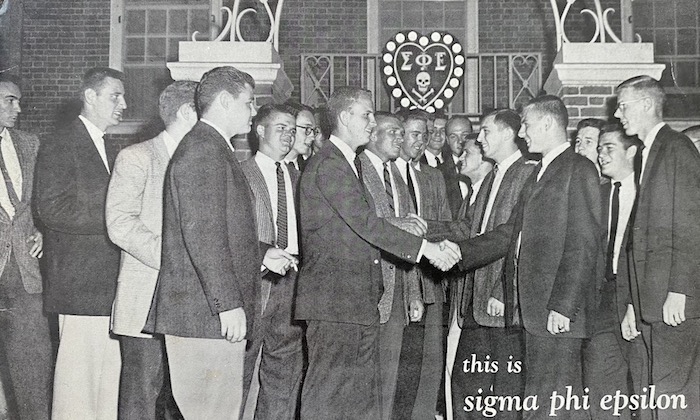
Cover of a 1958 SigEp brochure<br /> Photos courtesy of Special Collections & Archives, Z. Smith Reynolds Library
The housing fund began on the original campus when members of a campus fraternity, Chi Tau, affiliated with Sigma Phi Epsilon fraternity and founded the North Carolina Zeta Chapter. Bedford Black (’42), a standout student from Kannapolis, North Carolina, and a champion debater, helped start the chapter and served as its president.
The Old Gold & Black once wrote of Black: “(When he was born) he immediately began to squall with such vehemence that his father forthwith forecast a career either as a preacher or a lawyer for his lusty-voiced progeny.” (After serving in the U.S. Army Air Forces in World War II, Black became a lawyer in his hometown. In 1959, Time magazine reported how a powerful textile mill owner silenced that voice in the Kannapolis newspaper after Black dared run against – and defeat – the owner’s cousin for a seat in the North Carolina General Assembly.)
The new fraternity eventually moved into the center section of Simmons dormitory, also known as “fraternity row,” with two other fraternities on each side. But Black thought the fraternity should have its own house. Around 1942, he directed that part of each brother’s monthly dues go into a housing fund. Although many of the details have been lost to history, SigEps from the 1950s and ’60s remember the amount as $1 a month.
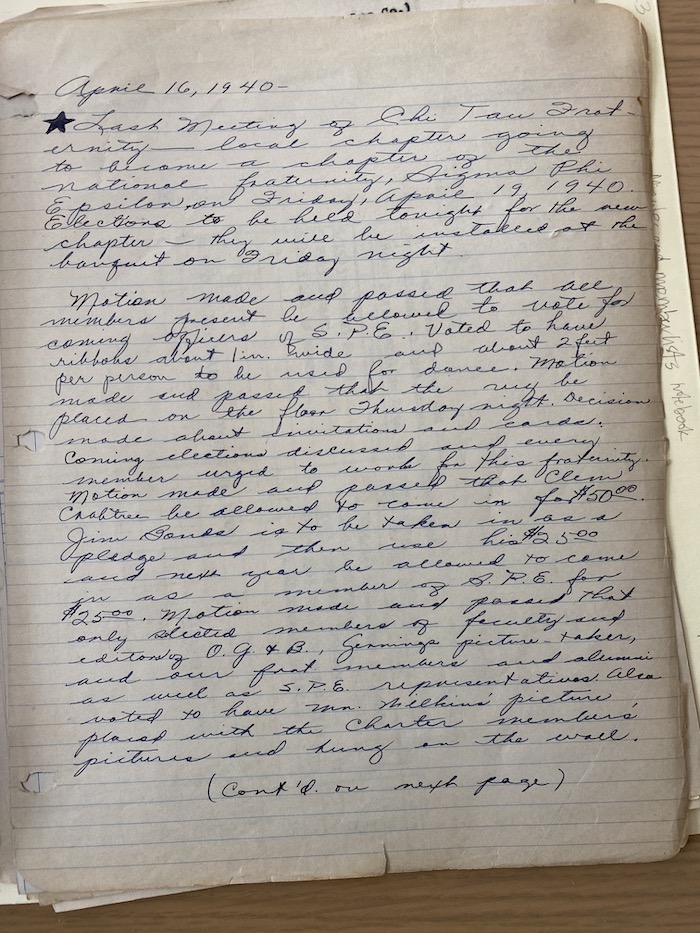
Handwritten notes document the beginning of Sigma Phi Epsilon.
When Wake Forest moved to Winston-Salem in 1956, Sigma Phi Epsilon moved into Poteat Residence Hall. Money continued to flow into the housing fund, month after month, year after year, until the 1990s. Black kept a close eye on the fund and, from time to time, would dole out money to the fraternity to buy furniture or other things.
Black remained active with the fraternity and was grand president of its national board in the early 1960s. He started the Order of the Golden Heart, Sig Ep’s highest national honor that is still awarded today. He died in 1971.
Generations of SigEps passed down the story of Bedford Black and the erstwhile housing fund. Williams served as the fraternity’s president in 1957-58 and knew Black.
“The officers knew there was some money off in the amorphous somewhere that if we needed something, we could get it,” he says. But as the years went by, “I, as well as most other people I would guess, forgot about it,” recalls Williams, a retired pediatric dentist who lives in Chapel Hill, North Carolina.
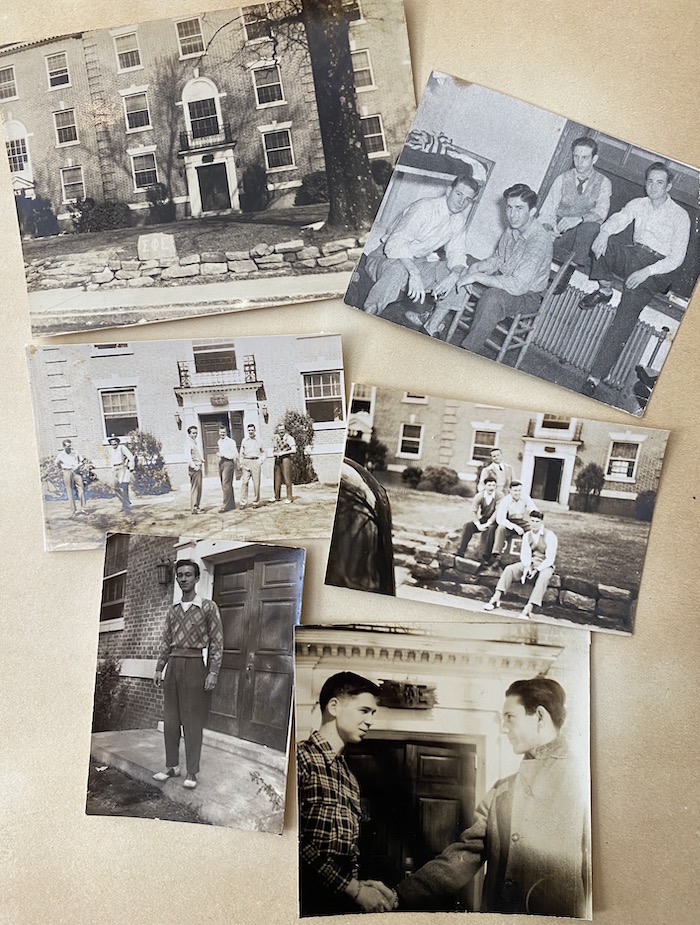
Snapshots of SigEps on the original campus and the chapter's home in Simmons Dormitory
The story might have ended there, had it not been for a SigEp reunion about 10 years ago. “There were some guys there older than me, and it came up in the beer-drinking conversation: ‘Whatever happened to the building fund?’ There was this pregnant silence because nobody knew,” Williams says, recalling how one member did some figuring on a napkin and said, “‘If it’s still around, there ought to be about half a million dollars.’”
Williams volunteered to track down the fund, which led him to SigEp alumnus Joe Sills (’77, P ’14), a CPA in Winston-Salem, who was managing the housing fund with a local financial firm. He was patiently waiting for the day when someone would ask about it.
“The further and further it got away from the original purpose,” no one really knew what to do with the fund, Sills says. “For the longest time, people would say, ‘Well, we might have an opportunity to buy property.’”
Sills, like Black decades before him, would occasionally give the fraternity money for furniture or repairs to the SigEp space in Poteat dormitory. He confirmed the figures jotted on the napkin: There was indeed $500,000 in the fund.
All this was taking place as the SigEp chapter was struggling. In 2002, Wake Forest suspended the fraternity for three years for violating group responsibility principles. The fraternity returned to campus as a colony in 2009, but over the next eight years “struggled to achieve and maintain the criteria set forth by their national organization to achieve chapter status,” according to a 2017 statement by the Wake Forest Office of Student Engagement. SigEp’s national board closed the Wake Forest colony the same year.
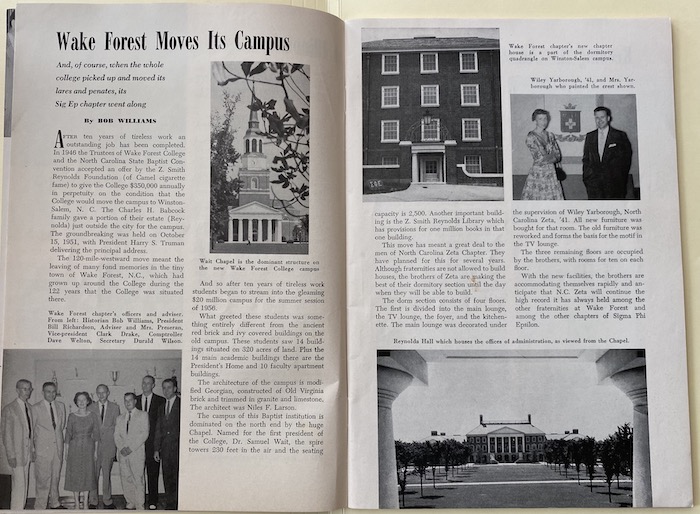
An article on Wake Forest's move to Winston-Salem, written by Bob Williams, ran in the November 1958 issue of Sigma Phi Epsilon Journal. "The brothers of Zeta are making the best of their dormitory section until the day when they will be able to build," Williams wrote.
With Black’s dream of a fraternity house officially dead, SigEp alumni set up a board of trustees to decide what to do with the housing fund. The trustees formed a nonprofit and converted the housing fund into a scholarship fund.
Since the housing fund came from fraternity dues paid by students, Williams says, it’s only right that it go back to students.
The first three scholarships were awarded in 2018. The fund’s trustees work with Student Financial Aid every year to identify about five students who need financial assistance. They also send out a newsletter to SigEp alumni to invite them to submit names of relatives who are students at Wake Forest for consideration for the scholarship.
“I don’t want to mail (the check) to them. I want to see the joy on their face ... (and) to see my joy in giving it to them."
The trustees interview each student who applies and make awards based on financial need, academic record and service to Wake Forest or the community. Freshmen aren’t eligible, but once a student receives an award, he or she can reapply in subsequent years.
The goal is to spend only the income generated by the scholarship fund and preserve the principal so that it can continue, Williams says. The SigEp trustees also sponsor an alumni tailgate at Homecoming each year to maintain the ties of brotherhood.
Williams enjoys delivering the checks to the recipients. “I don’t want to mail it to them. I want to see the joy on their face,” he says. “And I want them to see my joy in giving it to them. I want to put it in their hands and say, ‘We’re real proud of you,’ and give them a hug.”
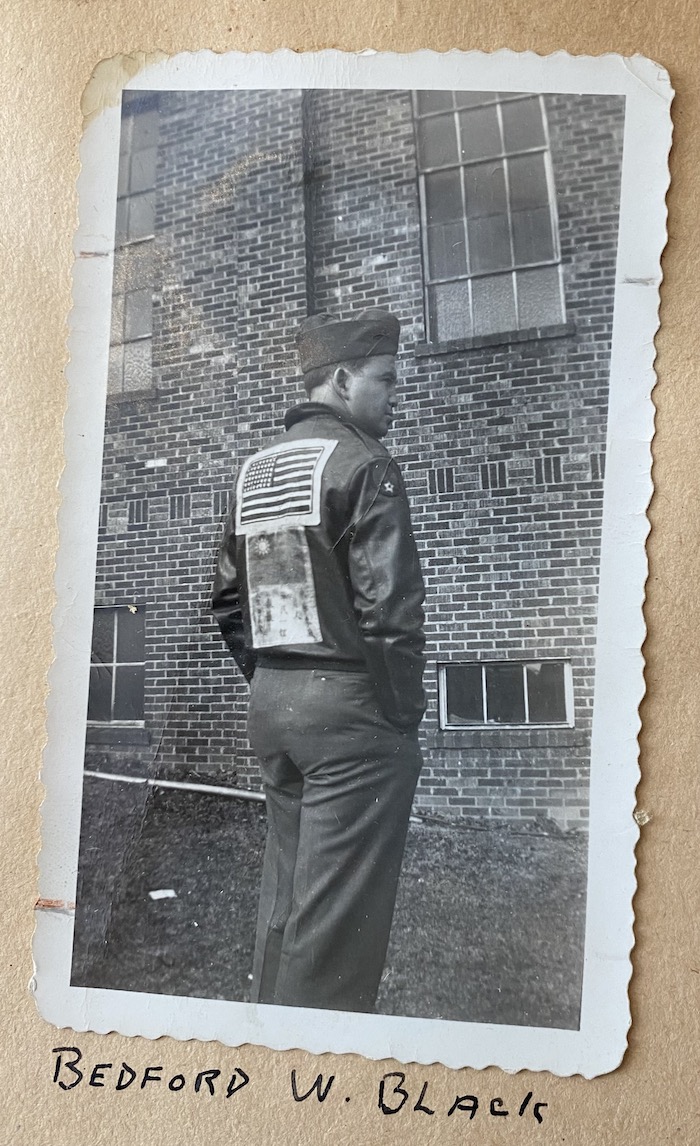
Undated photo of Bedford Black


